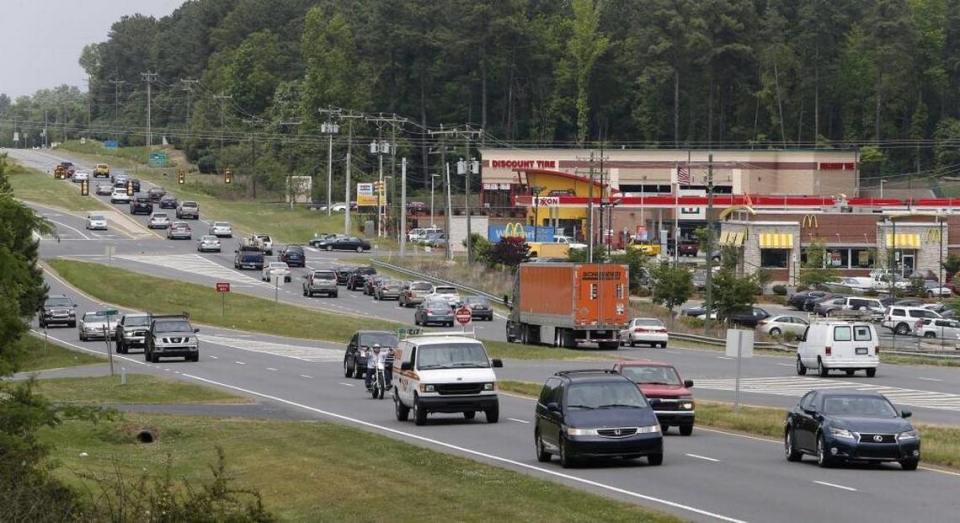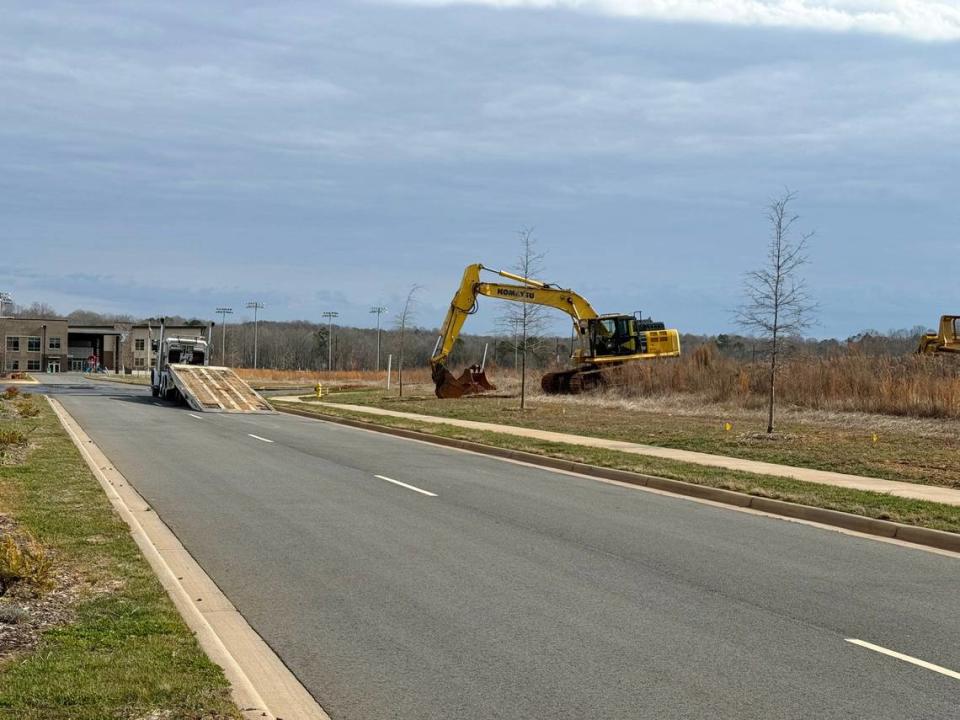Should Indian Land become its own city by 2040? New county plan urges considering it
Indian Land residents who haven’t been here long want their community to slow down the growth. But would they want to create their own city?
Tucked into a new Lancaster County long-term plan is a goal to consider a “measured and intentional plan” to transition the county panhandle to a municipality.
Work on the plan began in 2021. Once approved by Lancaster County Council — which could be as soon as next month — it will guide land use decisions for more than a decade.
The plan doesn’t list details for when and how a push might form to incorporate Indian Land. But if it happens, it won’t be the first time Indian Land faced the townhood question.

Indian Land’s prior vote on incorporating
A small but connected group of residents pushed for an incorporation vote in early 2018.
The issue became contentious between residents concerned about tax increases and organizers who wanted to keep tax revenue, franchise fees and more from the high-growth Indian Land there.
Organizers cleared several state hurdles to get the decision to a ballot. That push in Indian Land caused the smaller Van Wyck community to hurriedly petition for their own incorporation so they wouldn’t be sucked into Indian Land. Van Wyck became a town by public vote in 2017.
The Indian Land campaign, scrambled somewhat by the loss of Van Wyck, sputtered.
About 83% of voters opted not to make Indian Land a town. The only intrigue in the election came from a question of what the potential town should be named. Voters got creative, with options from “Fancy Town” to “Overtaxville” to “Towny McTownface.”
Who wouldn’t want to live in Tebowville? Hillary Clintonville? Maybe Deez Nutsville?
If a new move toward incorporation develops, it will have to focus north of Van Wyck. That area still includes most of the county panhandle, north of Highway 75.
Indian Land growth by the numbers
The Lancaster 2040 plan includes a lot of numbers that highlight what the panhandle has become in recent years:
▪ 40,680
The panhandle resident count in the 2020 Census is roughly the same as the populations of Fort Mill, York and Lancaster combined. If the panhandle were a city or town, it would rank No. 10 in South Carolina ahead of Spartanburg, Hilton Head, Myrtle Beach and others.
▪ 476%
Panhandle growth from 2000 to 2020 transitioned a mostly rural area into an urbanized one. The county grew 179% from 2000 to 2010 and 106% from 2010 to 2020.
▪ 14,400
New homes built in the panhandle from 2000 to 2022, which provided space for about 30,000 residents.
▪ 12%
Developed land in the panhandle increased from 2010 to 2020.
▪ 5,360
New homes (3,200) and apartments (2,160) were approved but not yet built, as of last fall. Those residences are expected to add 13,000 people.
▪ 32,000
The average number of daily traffic trips along U.S. 521, or Charlotte Highway, is the most in the county. S.C. 160 and S.C. 5 in the panhandle see more than 10,000 trips a day.

▪ 2030
The year almost all Lancaster County schools are projected to be over capacity, though planning is ongoing for a bond referendum.
▪ 83.2%
The share of panhandle homes built since 2000 shows dwarfs any prior period. The 2000 to 2009 decade accounts for 42.8% of homes, followed by 40.4% since then.
▪ 70%
Panhandle residents who moved to their current address since 2010 are in the majority.
▪ $113,000
The panhandle median household income is well above Lancaster County ($72,186) and state ($63,623) averages.
▪ 46.9
The median age of panhandle residents is almost seven years older than Lancaster County as a whole. A major driver of that difference is the Sun City retirement community.
What else is in the 2040 plan?
Indian Land’s potential to become a municipality is one of almost 20 panhandle priorities.
Others include possible Charlotte Area Transit System bus connection to Ballantyne and light rail at the Interstate 485 station in Pineville, North Carolina; a “central civic gathering space” in Indian Land, a funding stream for road improvements and more access to the Catawba River.
Traffic, growth, schools impact Indian Land
Of almost 2,000 survey responses to Lancaster 2040, some 62% came from panhandle residents. About 79% came from some unincorporated part of the county.
About 59% of responses consider quality of life in the county as average. Just 30% marked high, and 11% went low. Among concerns, growth and development was the top first- and second-place answer given by the most participants. Traffic was second, for both. Schools were the third-greatest concern.
Most responses, 63%, said growth is happening too fast. In the panhandle, 82% said its too fast.
Countywide, 74% of responses listed traffic congestion as the top transportation issue. In the panhandle, congestion was the top issue for 95% of people. In southern Lancaster, by contrast, the top response was “no concerns” at 41%.
Among all responses, 26% of residents have lived in Lancaster County less than five years. More than half, 52%, moved here in the past 10 years.
How to comment on the plan
The Lancaster 2040 plan has public meetings upcoming Tuesday at the Kershaw library, Jan. 29 at the Lancaster County Historic Courthouse and Jan. 30 at the Del Webb library in Indian Land.
All meetings begin at 6 p.m.

